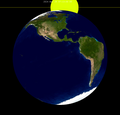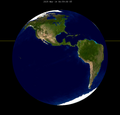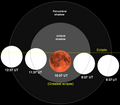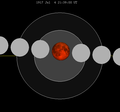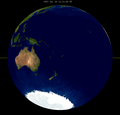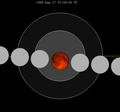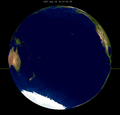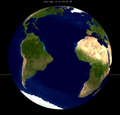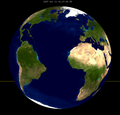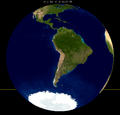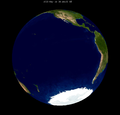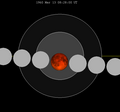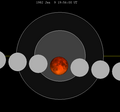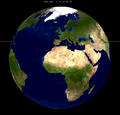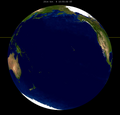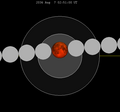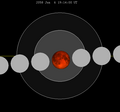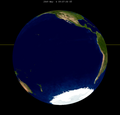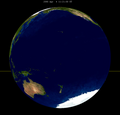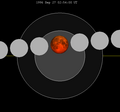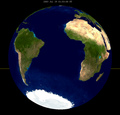| Total eclipse | |||||||||||||||||
 Totality viewed from Sydney, Australia at 18:05 UTC | |||||||||||||||||
| Date | September 7, 2025 | ||||||||||||||||
|---|---|---|---|---|---|---|---|---|---|---|---|---|---|---|---|---|---|
| Gamma | −0.2752 | ||||||||||||||||
| Magnitude | 1.3638 | ||||||||||||||||
| Saros cycle | 128 (41 of 71) | ||||||||||||||||
| Totality | 82 minutes, 6 seconds | ||||||||||||||||
| Partiality | 209 minutes, 24 seconds | ||||||||||||||||
| Penumbral | 326 minutes, 40 seconds | ||||||||||||||||
| |||||||||||||||||
A total lunar eclipse occurred at the Moon's ascending node of orbit on Sunday, September 7, 2025, [1] with an umbral magnitude of 1.3638. A lunar eclipse occurs when the Moon moves into the Earth's shadow, causing the Moon to be darkened. A total lunar eclipse occurs when the Moon's near side entirely passes into the Earth's umbral shadow. Unlike a solar eclipse, which can only be viewed from a relatively small area of the world, a lunar eclipse may be viewed from anywhere on the night side of Earth. A total lunar eclipse can last up to nearly two hours, while a total solar eclipse lasts only a few minutes at any given place, because the Moon's shadow is smaller. Occurring about 2.6 days before perigee (on Wednesday, September 10, 2025, at 8:10 UTC), the Moon's apparent diameter was larger. [2]
Contents
- Visibility
- Gallery
- Eclipse details
- Eclipse season
- Related eclipses
- Eclipses in 2025
- Metonic
- Tzolkinex
- Half-Saros
- Tritos
- Lunar Saros 128
- Inex
- Triad
- Lunar eclipses of 2024–2027
- Metonic series
- Saros 128
- Tritos series
- Inex series
- Half-Saros cycle
- See also
- Notes
- External links
This lunar eclipse was the second of an almost tetrad, with the others being on March 14, 2025 (total); March 3, 2026 (total); and August 28, 2026 (partial).



































